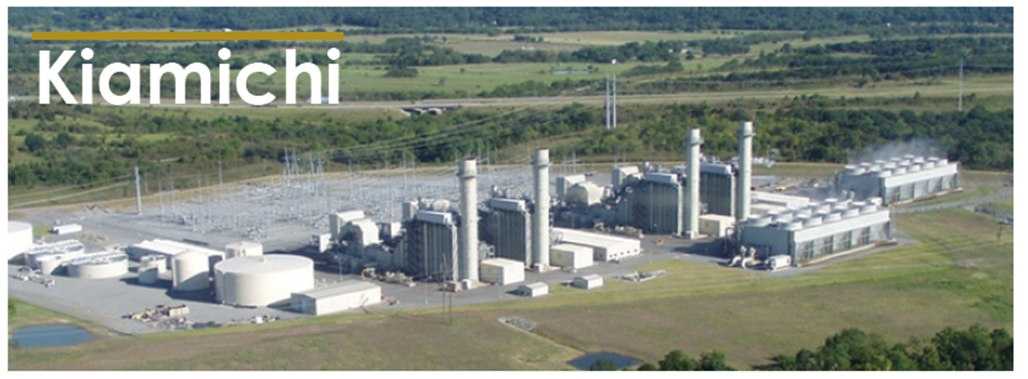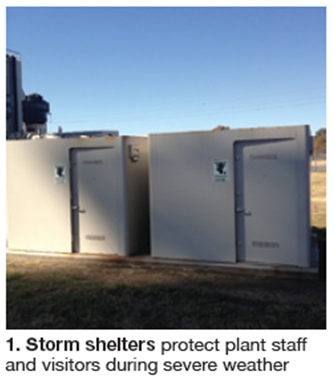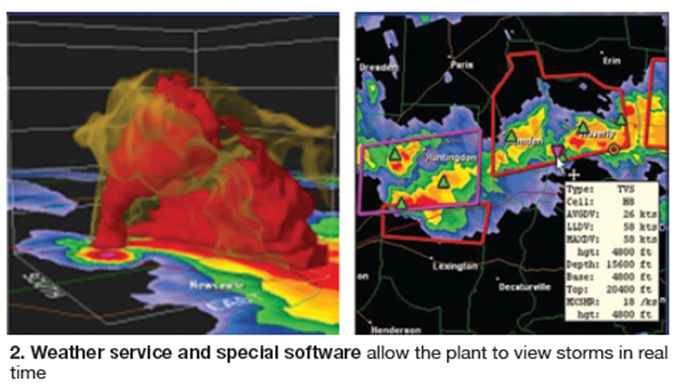Severe-storm, tornado readiness key to personnel safety
Best Practices Award
Tenaska Kiamichi Generating Station
Owned by Kiowa Power Partners LLC
Operated by Tenaska Operations Inc
1220-MW, gas-fired, two-unit, 2 x 1 combined cycle located in Kiowa, Okla
Plant manager: Bob Pope
Challenge. Severe storms and tornados can pop up on short notice in Oklahoma. Kiamichi procedures call for actions to be taken as storms/tornados are tracked from 50 miles out—including making preparations to shut down the plant if necessary. All personnel must be notified of a severe storm in the area of the plant in a timely manner.
To achieve this goal, Kiamichi needed to receive and monitor real-time data on storm severity, speed, and direction 24/7/365. The plant is located on the outer edges of the areas covered by major TV stations: Dallas is about 3 to 3.5 hours away, Oklahoma City 3 hours, and Tulsa 2.5. These stations provide little coverage of weather in the area of the plant; rather, they pan the weather highlights in areas where most of their viewers live. Consequently, TV is of little value for providing the detailed weather information required by the plant. Likewise, most weather Internet sites are of limited value because the information they deliver typically is 10 to 15 minutes old by the time it hits the screen.
Solution. Stationary and portable weather radios were purchased and located in the control room. They are removed when evacuating to the storm shelters (Fig 1) and each shelter has a radio for monitoring the storm. As for weather information, the plant subscribed to Gibson Ridge, which offers radar data along with software that allows the plant to view storms in its area in real-time (Fig 2). Having the ability to see weather in real time and know how fast and severe a storm is coming towards the plant greatly improves the decision-making process.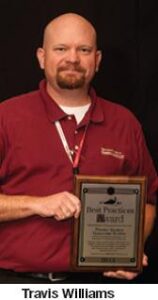
The plant also purchased and installed three sirens to alert of severe weather. They are located around the plant and are started from the control room by the operators. Sirens are sounded when severe storms are less than 30 minutes/25 miles out and tracking towards Kiamichi. When the sirens sound, all plant personnel gather in the control room for weather updates and instructions.
Results. Installation of weather monitors in the control room and plant lobby, sirens, weather radios (stationary and portable), storm shelters (already installed), and coordination with the local emergency planning committee has produced the capability for making decisions and preparations for severe storms with real-time information even on short notice 24/7/365.
Project participant:
Travis Williams, program and projects specialist
NERC CIP-006: physical security perimeter challenges
Challenge. North American Electric Reliability Corp’s (NERC) standard CIP-006 requires continuous physical security of the perimeter surrounding Critical Cyber Assets.
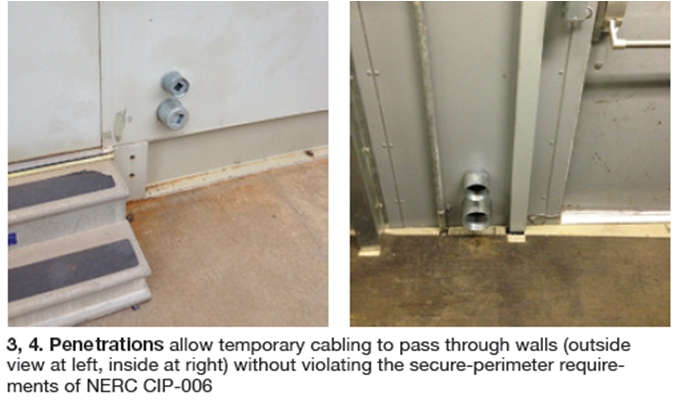 Our annual performance test presented a challenge in that cabling for temporary instrumentation would need to be run into some of these protected areas for an extended period of time. Leaving the doors to the secure areas open for this cabling would have made us non-compliant with the security requirements of the standard.
Our annual performance test presented a challenge in that cabling for temporary instrumentation would need to be run into some of these protected areas for an extended period of time. Leaving the doors to the secure areas open for this cabling would have made us non-compliant with the security requirements of the standard.
Solution. Following discussion of options, the decision was made to add permanent access points for this cabling that could be reclosed upon completion of testing (Figs 3, 4). The I&E department installed permanent penetrations with threaded plugs in the walls to allow the cabling to pass through the building walls. When testing is not on-going, the threaded plugs are installed to keep the areas closed to the elements. The penetrations are large enough to handle the cabling required for testing but small enough that there is no possibility of causing a security concern.
Results. The secure area doors remain closed and secure at all times while still being able to perform the competing operational requirements of performance testing.
Project participants:
Robert Bell, plant engineer
Rusty Clark, I&E technician


